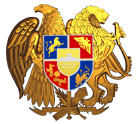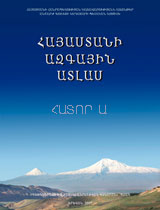Dear Member of the ACCC you will find an important information on Armenia, Armenian regulations, different opportunities and offers as well information important for the businessmen and for travellersin this section.
To place an ad or a link on this section please contact our office in Montreal: info@armcanchamber.com
INTRODUCTION TO ARMENIA
Geography
Armenia is a country on the southern side of the Caucasus plateau at the crossroads of Europe and Asia.
 Neighboring Countries
Neighboring Countries
In the North: Georgia
In the East: Azerbaijan
In the South: Iran
In the South -West: Nakhijevan (Azerbaijan)
In the West: Turkey
The climate of Armenia is continental. The average temperature fluctuates between +18C and + 30C in July-August and between - 30C and +10C in January.The type of land is as follows: 37.2 % mountains, 29.8 % pasture, 21% arable land and 12% woodland.
Armenian mountains are rich in iron, molybdenum, gold, lead, silver, clay, limestone, as well as semi-precious and ornamental stones. Armenia is rich in natural mineral waters too. There are hundreds of natural wells throughout the country. There are 10 natural lakes, 5 canyons and numerous springs and torrents. Lake Sevan is the world’s largest highland fresh water lake (1,400 square kilometers). The country’s highest peak is Mount Aragats (4,090 meters).
KEY INFORMATION
| OFFICIAL NAME | Republic of Armenia |
| HEAD OF STATE | President - Serzh Sargsyan |
| HEAD OF GOVERNMENT | Prime Minister - Tigran Sargsyan |
| NATIONAL LEGISLATURE | |
| CAPITAL | Yerevan |
| MAJOR CITIES | Gyumri, Vanadzor, Ashtarak, Artashat, Goris |
| TOTAL LAND AREA | 29,800 square kilometers |
| POPULATION | 3,2 million |
| LABOR FORCE | 64,6% |
| LITERACY (%) | 99% |
| OFFICIAL LANGUAGE | Armenian |
| INDEPENDENCE DECLARED | 1991 |
| RELIGION | Christian (adopted 301 A.D.), Armenian Apostolic Church |
| CURRENCY | Dram (AMD), introduced in 1993 |
| TIME ZONE | GMT+4 |
Population
Based on current official estimates, Armenia’s population is 3.2 million with an annual growth rate of 1.4 %. Ethnically, Armenia is a homogeneous country with 96% Armenians. The next biggest ethnic group is Russian with 1.5%. Other ethnic groups are: Assyrians, Greeks, Jews, Kurds, Ukrainians, Yezidis, etc.
Labour Force
The majority of people are between the ages of 17 and 59 (64.6%), among which the level of education is more than satisfactory. Education continues to be one of the main values in Armenian society. Today, there are about 50 universities with more than 77,000 students. 18 of the universities are state owned and 8 are foreign: American University of Armenia, French University, European University and 5 Russian Universities.
Labour Force quality in Armenia

The unemployment rate was reduced to 7.4% in 2006 as opposed to 8.2% registered in 2005. The combination of graduates and the unemployment rate means that there is a supply of highly qualified people available today in Armenia. According to a UNDP survey of the age group 13 to 33, over 30% have the proficiency to conduct business in English language.
Armenian Diaspora
Armenia has a worldwide Diaspora comprising about 5 million. The largest Diaspora Communities are in the USA, France, Germany and Russia. The close relation with huge Diaspora assists Armenians to be knowledgeable about the rules of doing business in Western and Eastern style.
Language
Armenian is the official language and is spoken by 99% of the population. Russian dominates as the second language. English is the third spoken language as a consequence of the country’s integration into the world economy.
State Structure
Due to the Constitution adopted through a national referendum in 1995, Armenia is independent and democratic with a presidential form of government. The executive body is the Government of Armenia headed by the Prime Minister, who is appointed by the President based on suggestion of leading parties in the National Assembly. The National Assembly is the legislative body of the country.
Judicial System
The Judicial System of Armenia is represented by the Courts of First Instance, the Courts of Appeal, and the Court of Cassation. The Constitutional Court decides on compliance of the decrees of the National Assembly, the President, and the Government with the Constitution of Armenia.
provided by ADA
Interactive map of Armenia. (Armenia Information website www.armeniainfo.am)



